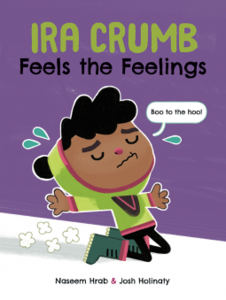Why Does It Take So Long to Make a Picture Book?: Or, How To Get Really Good at Waiting
By Naseem Hrab
I don’t know about you, but I wasn’t prepared for all the waiting I’d have to do in life. And when it comes to writing, you do a lot of waiting. Waiting for inspiration to strike. Realizing that inspiration won’t strike unless you pick up a pen. Picking up a pen and waiting for an idea to pop into your head. Waiting for a bad idea to turn into an okay idea that might turn into a good idea. Shrug. Writing a new draft. Waiting to get distance from that draft. Writing another draft. Waiting to get feedback from friends. Writing draft after draft. Waiting to get feedback from an editor. Writing more drafts. Waiting to get even more feedback from an editor.
Waiting. Waiting. Waiting.
It generally takes a minimum of two years to make a standard thirty-two-page picture book once a publisher has acquired it. Two years. Minimum. Remember that’s after you’ve done all the aforementioned waiting outlined in my first paragraph, which may have taken you years. So, why does it take so long to make a picture book? What’s going on behind the scenes after you receive your contract?
I spoke to one of my friends and colleagues Jennifer Grimbleby, the Managing Editor at Kids Can Press, to get to the bottom of the mystery that has plagued children’s authors for millions of years: Why on earth does it take so flipping long to make a book that is going to be read in five minutes? Well, let’s find out now. Oh, one more thing! You should know that each publishing house has a different way of doing things, so these are just the basic things that are happening behind-the-scenes.
Once a publishing house has officially accepted your book, your publisher starts making plans. They’ll consider things like: Who will illustrate it? Who will design it? What season will it be published in? What size will it be? How many pages will it run? Your editor will also provide you with more detailed notes on how to shape your manuscript. You’ll get a deadline for your final manuscript and the two of you will work towards it.
And remember, your editor is not only working on your book, they’re also working on other books being published in the same season as your book, as well as books that will be published in the seasons after your book. So, for example, if a publishing house publishes 20 books a season, multiply this process by 20. Be nice to your editor. Don’t rush them. Instead of rushing your editor, you should always bake them cookies!!!
While you and your editor are working on your manuscript, your editor is also searching far and wide to secure an illustrator for the book. Editors must often have a few illustrators in mind since a potential illustrator may turn down a job due to workload, scheduling issues, financing, or simply not thinking they’re a fit.
Once your final manuscript is completed, it will be circulated in-house and sent to a copyeditor (and, in the case of nonfiction, a fact-checker or an expert reviewer). You’ll get the chance to approve any potential revisions. Then the designer of your book will input your manuscript into a sample design with space left for the illustrations. And, off we go, to illustration! Here’s the hardest part for you—your work is basically done and all you do is wait.
Wait. Wait. Wait. Twiddle thumbs. Wait. Avoid picking up pen again. Refresh email. Maybe editor has a question about an errant comma in manuscript? Refresh email again. Wait. Wait. Wait. Realize don’t even know how, to, use, commas correctly.
Ideally, the illustrator is given eight months to a year to complete their work. During this time, the illustrator will do character sketches, create a sample palette or colour swatches, tiny thumbnail sketches (essentially, an early draft of the visual narrative), storyboards (a more detailed take on the visual narrative), develop rough illustrations of the whole book and then move on to final illustrations—all while backing-and-forthing with the editor and the designer. Once the final illustrations are in, the designer will set the art with the final text. Depending on your publisher’s processes, you will either see the roughs or the finals or both. Seeing the art for the first time is one of the most exciting things on earth!
Your CanLit News
Subscribe to Open Book’s newsletter to get local book events, literary content, writing tips, and more in your inbox
And then back to waiting. Consider writing new story. Maybe pick up pen? Nah. Netflix. Netflix. Netflix.
At some point during the illustration stage, you will likely be asked to tweak your words to ensure that the writing and illustrations work in tandem. Also, somewhere in here, the illustrator and designer have been working on sample cover designs, which you’ll also be asked to review. If you’re anything like me, you’re probably desperate—I mean, grateful for the opportunity to be useful again.
And then back to waiting again! Maybe commit to writing new story? Definitely pick up pen. And yet, Netflix. Netflix. Netflix.
After the final art comes in, it will be circulated to the editorial, production, sales and marketing teams. And then the whole designed package will go through many stages of production editing: here’s where efforts are made to ensure that everything makes sense; that the art matches the story; and that there are no continuity errors or grammatical mistakes. And back-and-forth, back-and-forth the illustrator, editor, production editor and designer go until all the hiccups, typos and glitches are corrected. Does anyone need me for anything? No? Okay. Fine.
Practice signature 100 times for imaginary signings. Consider writing story about narcissistic author. Put down pen. Look in mirror. Gasp. What have become?
Finally, your book is ready to be printed! And guess what? You still have about 4–6 months before you get to hold the finished product in your significantly aged hands. The book is sent to the printer, and the publisher reviews the proofs. Then it takes months to print and ship the book—typically, a picture book is printed overseas and ends up on shipping boats for months. And then the books sit in a warehouse for a few more months until they’re ready to be shipped to booksellers and wholesalers about a month before they release.
Realize book has taken so long to make … Don’t care anymore. Consider taking up hobby that provides instant gratification. Like staring into mirror. Gouge out eyes with pen.
And guess what? I didn’t even go into what the sales, marketing and rights teams have been doing throughout this production process … About a year before your book comes out, the sales team has already started talking about your book to potential buyers, the rights team has already started talking about your book to potential foreign publishers for translations, and the marketing team has already determined the many ways in which they will promote your book.
Weep tears of ink from pen gouging incident. Regret.
There you have it … the life of a book. So, I hope you spend the next two years writing a bunch of new manuscripts instead of just waiting for your first book to come out, so that you can experience this scenario over and over and over for the rest of your life. In the end, it’s worth it! Trust me!
The views expressed by Open Book columnists are those held by the authors and do not necessarily reflect the views of Open Book.
Naseem Hrab is a writer, a storyteller and a pretty good friend. Her comedy writing has appeared on McSweeney's Internet Tendency and The Rumpus. Naseem worked as a librarian for a time and now works in children's publishing. She lives in Toronto, Ontario.




